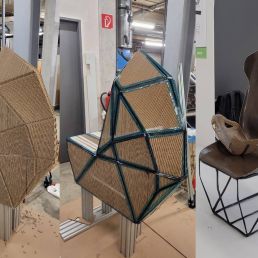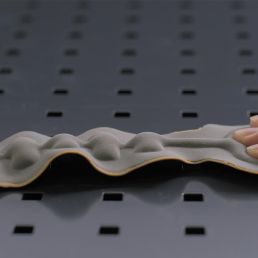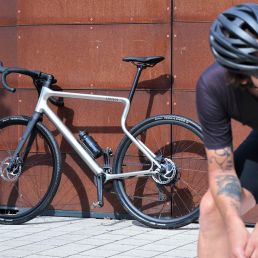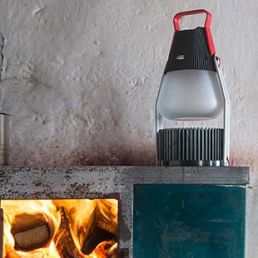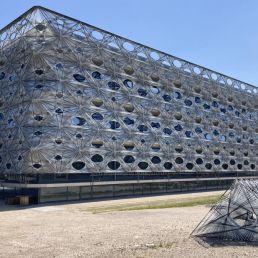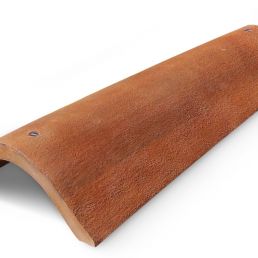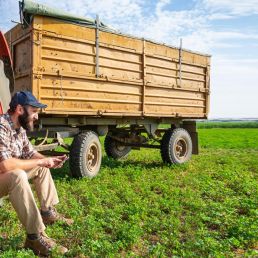
Stand-up paddleboard from renewable materials
Plastic-free water sports with recycled balsa wood
5 August 2021
It doesn’t look like it, but stand-up paddling is extremely exhausting. The sport is now one of the trends in holiday activities on the water. Unfortunately, conventional boards are made of petroleum-based materials such as epoxy resin and polyurethane, which, if lost, leads to plastic pollution in the water. Scientists at the Fraunhofer Institute for Wood Research WKI, Wilhelm-Klauditz-Institut, want to replace the plastic boards with sustainable sports equipment. To this end, a team of researchers is currently developing a stand-up paddleboard that is made entirely from renewable raw materials.
Recovering balsa wood from rotor blades
Stand-up paddling (SUP) is a sport that is close to nature, but the plastic boards are anything but environmentally friendly. As a rule, petroleum-based materials such as epoxy resin, polyester resin, polyurethane and expanded or extruded polystyrene are used in combination with fiberglass and carbon fiber fabrics to produce the sports equipment. In many parts of the world, these plastics are not recycled, let alone disposed of correctly. Large quantities of plastic end up in the sea and collect in huge ocean eddies. For Christoph Pöhler, a scientist at Fraunhofer WKI and an avid stand-up paddler, this prompted him to think about a sustainable alternative. In the ecoSUP project, he is driving the development of a stand-up paddle board that is made from 100 percent renewable raw materials and which is also particularly strong and durable.
“In standard boards, a polystyrene core, which we know as styrofoam, is reinforced with fiberglass and sealed with an epoxy resin. We, instead, use bio-based lightweight material,” says the civil engineer. Pöhler and his colleagues use recycled balsa wood for the core. This has a very low density, i.e. it is light yet mechanically stressable. Balsa wood grows mainly in Papua New Guinea and Ecuador, where it has been used in large quantities in wind turbines for many years – up to six cubic meters of the material can be found in a rotor blade. Many of the systems are currently being disconnected from the grid. In 2020 alone, 6000 were dismantled. A large proportion of this is burnt. It would make more sense to recover the material from the rotor blade and recycle it in accordance with the circular economy.
Patented technology for the production of wood foam
First, the wood is separated from the composite material in an impact mill. The density differences can be used to split the mixed-material structures into their individual components using a wind sifter. The balsa wood fibers, which are available as chips and fragments, are then finely ground. “We need this very fine starting material to produce wood foam. Fraunhofer WKI has a patented technology for this,” explains the researcher. In this process, the wood particles are suspended to form a kind of cake batter and processed into a light yet firm wood foam that holds together thanks to the wood’s own binding forces. The addition of adhesive is not required. The density and strength of the foam can be adjusted. This is important because the density should not be too high. Otherwise, the stand-up paddle board would be too heavy to transport.
Since the entire sandwich material used in conventional boards is to be completely replaced, the shell of the ecological board is also made from one hundred percent bio-based polymer. It is reinforced with flax fibers grown in Europe, which are characterized by very good mechanical properties. To pull the shell over the balsa wood core, Pöhler and his team use the hand lay-up and vacuum infusion processes. Feasibility studies are still underway to determine the optimal method. The first demonstrator of the ecological board should be available by the end of 2022.
Initially, the researchers are focusing on stand-up paddle boards. However, the hybrid material is also suitable for all other boards, such as skateboards. The future range of applications is broad: For example, it could be used as a facade element in the thermal insulation of buildings. The technology can also be used in the construction of vehicles, ships and trains.
image: Christoph Pöhler with a piece of former wind turbine rotor blade in the Fraunhofer WKI’s wood workshop. (source: Fraunhofer WKI)
Ecoblaq molecular wood colours
23 March 2024
Ecoblaq is a molecule manipulation method, a natural chemical reaction, making…
Natural fiber reinforced car seat
22 October 2023
The focus of the project "Design for Recycling" is a seat shell that is made…
MotorSkins morphing textiles
19 April 2022
Berlin based start-up MotorSkins designs and produces textiles with embedded…
3D Pioneers Challenge 2022
15 December 2021
The 3D Pioneers Challenge 2022 adresses tech pioneers who pave the way for…
IGNIS – Light from waste heat energy
12 August 2020
The availability of affordable, independent and, above all, clean electrical…
Brake disc with reduced fine dust
21 April 2021
Fine dust endangers our health. One of the main sources is traffic, especially…
Texoversum
15 July 2023
With the "Texoversum", Reutlingen University has put into operation a training…
Invisible Terracotta Solar Rooftile
10 May 2023
The family-run business Dyaqua has developed a technology to integrate a…
Xarvio – Digital Farming
8 January 2021
BASF Digital Farming GmbH has received the renowned Crop Science Award for the…

